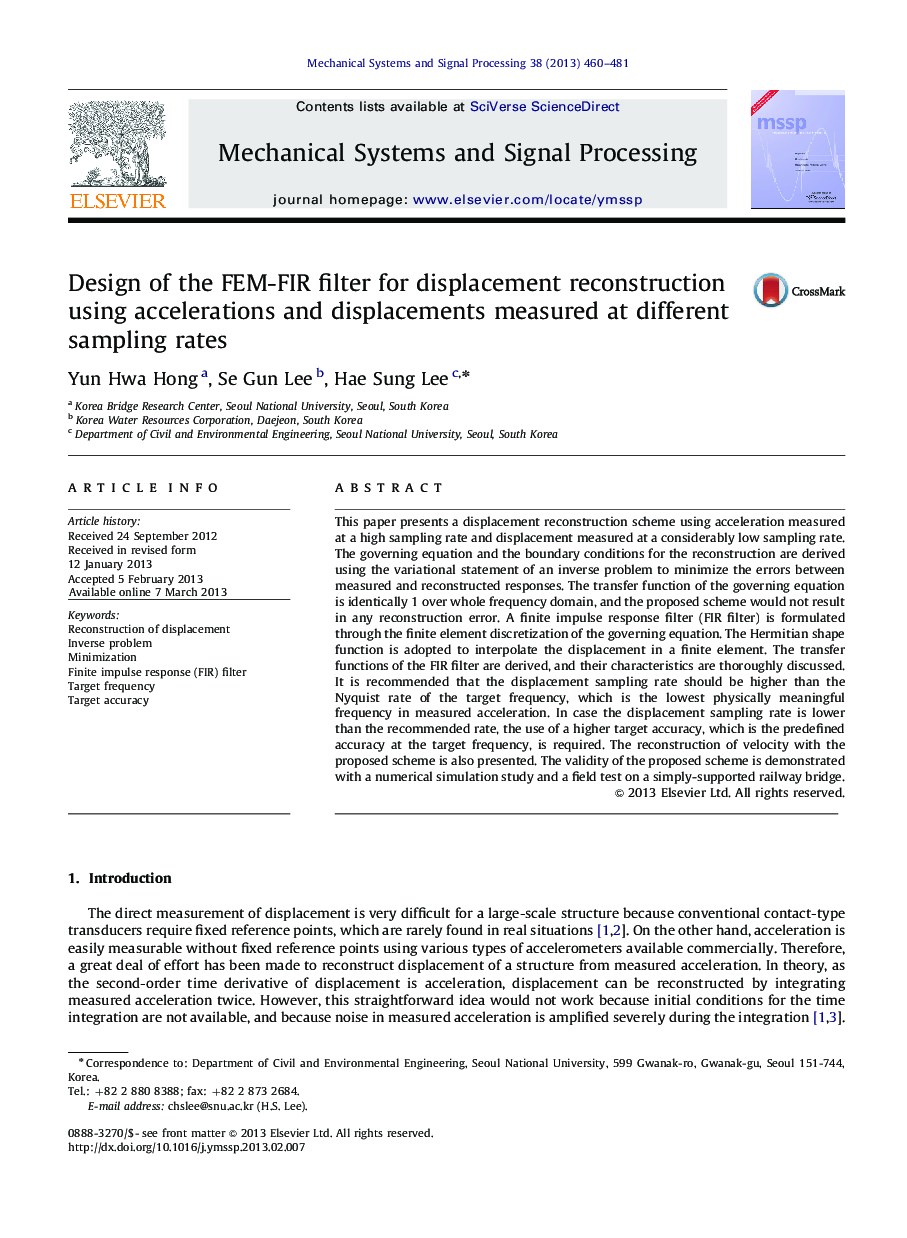| Article ID | Journal | Published Year | Pages | File Type |
|---|---|---|---|---|
| 559433 | Mechanical Systems and Signal Processing | 2013 | 22 Pages |
This paper presents a displacement reconstruction scheme using acceleration measured at a high sampling rate and displacement measured at a considerably low sampling rate. The governing equation and the boundary conditions for the reconstruction are derived using the variational statement of an inverse problem to minimize the errors between measured and reconstructed responses. The transfer function of the governing equation is identically 1 over whole frequency domain, and the proposed scheme would not result in any reconstruction error. A finite impulse response filter (FIR filter) is formulated through the finite element discretization of the governing equation. The Hermitian shape function is adopted to interpolate the displacement in a finite element. The transfer functions of the FIR filter are derived, and their characteristics are thoroughly discussed. It is recommended that the displacement sampling rate should be higher than the Nyquist rate of the target frequency, which is the lowest physically meaningful frequency in measured acceleration. In case the displacement sampling rate is lower than the recommended rate, the use of a higher target accuracy, which is the predefined accuracy at the target frequency, is required. The reconstruction of velocity with the proposed scheme is also presented. The validity of the proposed scheme is demonstrated with a numerical simulation study and a field test on a simply-supported railway bridge.
► We propose a robust discrete filter for displacement and velocity reconstruction. ► Pseudo-static displacement as well as dynamic displacement is reconstructed. ► Different sampling rates used for displacement and acceleration. ► Accuracy estimation of a result is possible without the aid of other measurements. ► There is no reconstruction error except discretization error in the time domain.
